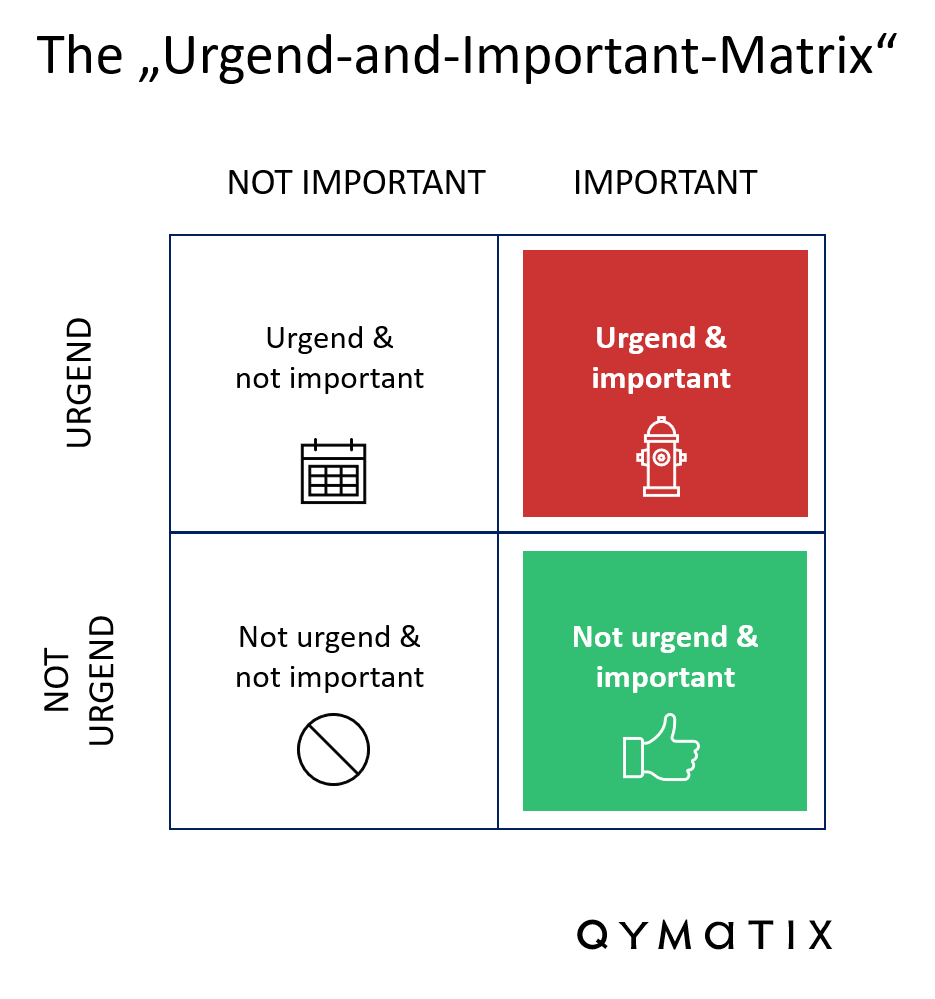Why B2B companies need to start with predictive analytics now

Please enter your Email address
Predictive analytics applications are essential in B2B companies but not yet urgent. Here you find out why this situation makes it the best time for B2B companies to start.
How far have AI and predictive analytics applications established themselves in the German B2B corporate world in 2021? Where is the trend heading, and what can we learn from the “Urgent-and-Important-Matrix”?
If you landed in this post, you probably know what predictive analytics (PA) is, how it relates to artificial intelligence and what benefits you can expect. If not, then we recommend reading this post first.
Underlying the coming thoughts is one fact: AI and predictive analytics applications add significant value to B2B companies with many customers, products, and therefore transactional data.
We do not discuss this fact and its pros and cons arguments here. I argue in this article why now is the best time to start.
The state of predictive analytics applications in the market.
First, we have some facts and figures for you (sources at the end under “Recommended reading”).
In the magazine for “success-oriented corporate management – controlling”, a survey on “predictive analytics in corporate planning” in 2020 shows great interest in the topic, but that very few companies are exploiting the potential.
The international study “Digitalization 2020” by Staufen also shows similar results:
“Many companies are still only spectators when it comes to artificial intelligence (AI), smart data and the like. Digital pioneers are already turning megatrends into concrete projects.”
The survey also shows that companies are convinced of the benefits of AI and machine learning. Only the implementation is slow.
“Great,” some of you may be thinking; “Then we still have time and can wait and see.”
Why this train of thought is wrong is shown by the “Thingend-and-Important Matrix”.
The Urgent and Important Matrix.
Successful managers use the Urgent and Important Matrix to prioritize tasks.
On the horizontal axis, there are the categories “important” and “not important”.
On the vertical axis, “urgent” and “not urgent”.
That creates four fields in which you can classify tasks or even projects: “important & urgent”, “important and not urgent”, “not important and urgent”, and “not important and not urgent”.

Now you have to classify and act accordingly:
What do you do with tasks or projects that fall into the “not important and not urgent” category? That’s right, cross them off.
Which tasks are Prio. 1? Yes, “urgent and important.” BUT why have you already done something wrong when most projects and tasks fall into this box?
Most of these tasks and projects were previously “important and not urgent”. So you are late because – now you are under stress.
EVERYTHING from the “not urgent and important” box, if not taken care of, will eventually end up in your “urgent and important” category.
What happens then? You have to play firefighter.
And relax, we all have tasks that suddenly land in “urgent and important.” For example, when a customer calls with an acute problem.
Just hand on heart, some tasks only ended up in the “firefighting box” because of our procrastination.
What does this have to do with AI and predictive analytics projects?
Predictive analytics is “Important” but not “Urgent”.
The current market situation on AI and predictive analytics shows – as described above – that it is a crucial topic and undeniably brings excellent benefits to B2B companies.
So we can put a checkmark on “important”. But “urgent?” Not yet. But soon.
Imagine if all your competitors were using this technology today. How long do you think you’ll survive?
A look at the other side of the Atlantic also shows that. The US is usually two to three years ahead of Germany in terms of technology. That’s how it was with Internet use, smartphone use, and social media.
Fact is: companies in the US implementing AI in sales are significantly more successful than their competitors.
We will soon see the same trend in Gemany.
However, although AI and predictive sales are essential for manufacturers and industrial distributors in Germany, they are not yet urgent. So nothing happens except observation.
But this is precisely a big mistake!
What is dangerous about “Urgent” and “Important”.
In terms of tasks to be done, there is nothing dangerous about “urgent and important” tasks.
It probably also depends a bit on the person. So, under what conditions someone works well. Maybe one or the other also needs a bit of pressure to be productive.
But I suppose you agree that it leads to stress for each of us when almost ALL tasks fall into this field. And such stress inevitably leads to mistakes.
And that’s precisely how it is with innovative AI and predictive analytics projects. As soon as it is urgent and essential, you make mistakes. And with projects, that can quickly become very expensive.
Also, the benefits you will get from the applications will diminish over time. Why? You implement the application only to not fall behind your competitors. You will already be behind. All the “early mover” effects are history.
CALCULATE NOW THE ROI OF QYMATIX PREDICTIVE SALES SOFTWARE
Do it better!
You know that AI technologies bring substantial added value.
Don’t let these projects slip into the “Urgent and Important” box. Do it right. Do it now.
B2B companies starting today have plenty of time to get started with small projects. Using artificial intelligence also means changing the way you work. That also needs time and explanations.
Just the fact that you have read this post to the end shows us that you are on an excellent path!
We wish you a relaxed entry into the AI world and look forward to seeing you become more successful and efficient as a result.
I WANT PREDICTIVE ANALYTICS FOR B2B SALES.
Further Read:
Data, BI & Analytics Trends: Das sind die Top Trends für 2021. Hg.: BARC (German language)
Internationale Studie “Digitalisierung 2020”. Hg.: Staufen AG (German language)
Mauerer, J. (2021): Was ist was bei Predictive Analytics? Hg.: Computerwoche (German language)